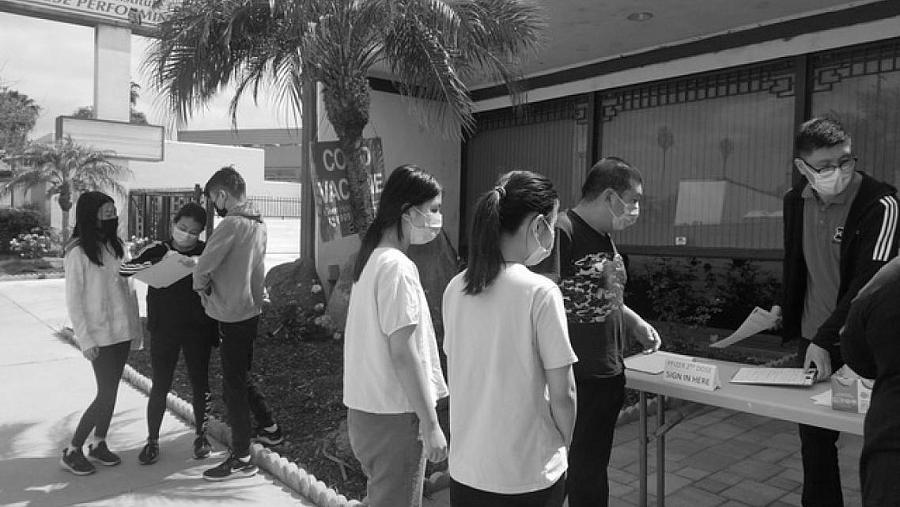The impacts of COVID-19 and related problems in the Burmese American community

Different communities in the United States have been impacted by the same virus since the pandemic began but communities of colors have been disproportionately impacted. Many in the Burmese community must also contend with issues like cultural mistrust, persistent racial health inequities, financial hardship, other traumas.
But these difficulties are not always legible to those outside the community. For my 2021 California Fellowship project, I wanted to uncover the challenges faced by the community and share them with a broader audience.
Although my project represents but one community in the United States, the Burmese community is sometimes invisible and harder to get to know compared to other communities. The real population of Burmese immigrants is much higher than the numbers showed in the Census.
For my project, I went to community vaccination sites on weekends several times to conduct interviews, asking people the question, “Why do you actively participate in getting vaccinated?” and “What are your beliefs around COVID-19 vaccination? What kind of resources do you rely on?”
For the first piece of my project, I made the two weekly follow up interviews for those who avoided vaccination. Some switched their final decisions some weeks later. Some changed their minds after receiving updated vaccine information. Some are still holding on their anti-vaccine stance.
I learned that:
-
We need a large community movement to overcome barriers to our current health care system. People lack health insurance and don’t want to see a doctor when they are sick because they have to pay cash at the medical office. Worse, mental health care has not been considered a priority in the community during the pandemic.
-
Better access to COVID-19 testing centers is needed in the community. Many positive cases data were missed because of this, and furthered spread of the virus in the community.
-
Social media misinformation about COVID-19 and vaccination plays a big role for in the community. The resources providing accurate and updated information about the virus are still needed. Most Burmese people in the community focus more on social media than the mainstream media.
-
The huge gap between Census data and the real Burmese population in the United States has a profound impact. The real community size is missed and it makes it harder to get proper health resources during the pandemic. The mortality and morbidity data are likewise missed or underreported.
There are at least 18 Burmese Buddhist monasteries and eight Burmese Christian churches in Southern California, but no Burmese community center. There are at least nine Burmese Buddhist monasteries in the San Francisco Bay Area and only one community center in Union City. There is only one printed Burmese community newspaper published in the United States since 2006.
That situation means the problems in the community are often overlooked. The chances to have workshops and counselling services like other communities are rare and hard to find in the Burmese community.
There are two Burmese victims (one in New York City and the other in Midland, Texas) in more than 90,000 reported anti-Asian hate incidents in 2020 and 2021. The man identified as the suspected shooter in the mass shooting at a Kroger in Collierville, Tennessee on September 23, 2021 is a Chin Burmese man. A shooting at WaWa gas station in Philadelphia on April 21, 2021 was committed by a Chin Burmese man. Both of them took their own lives at the end of the shooting.
The resources accessible in the community to prevent similar things in the future are scarce. Community awareness and government accountability are essential to address the problems.

